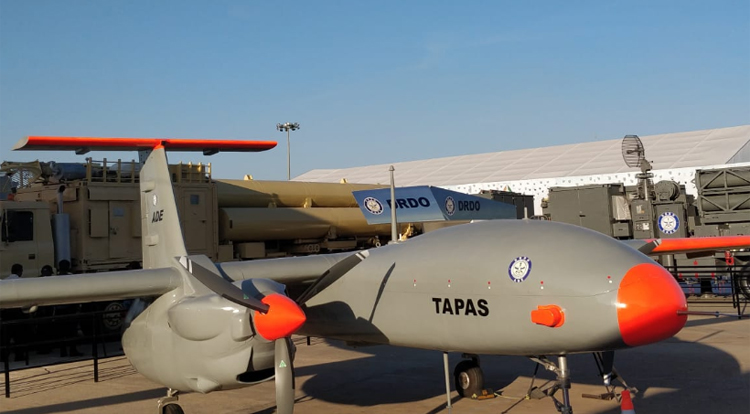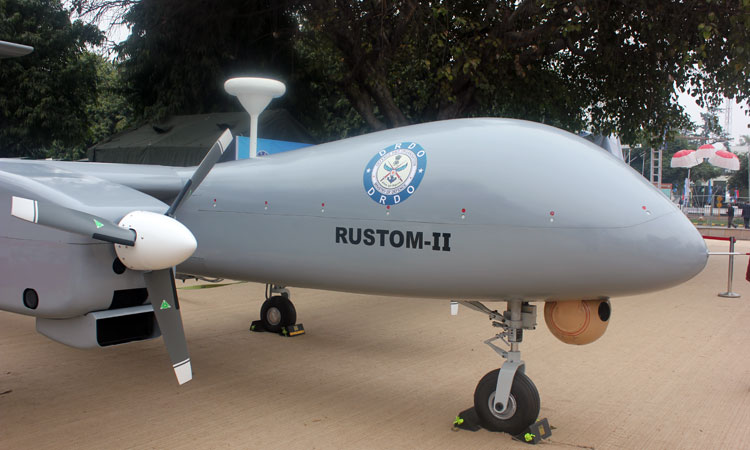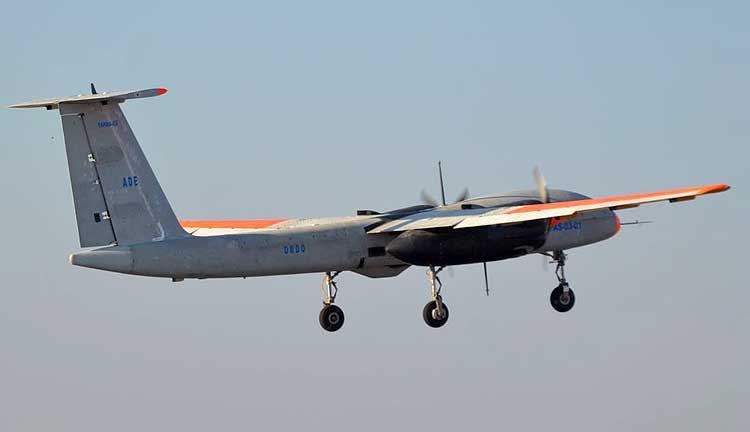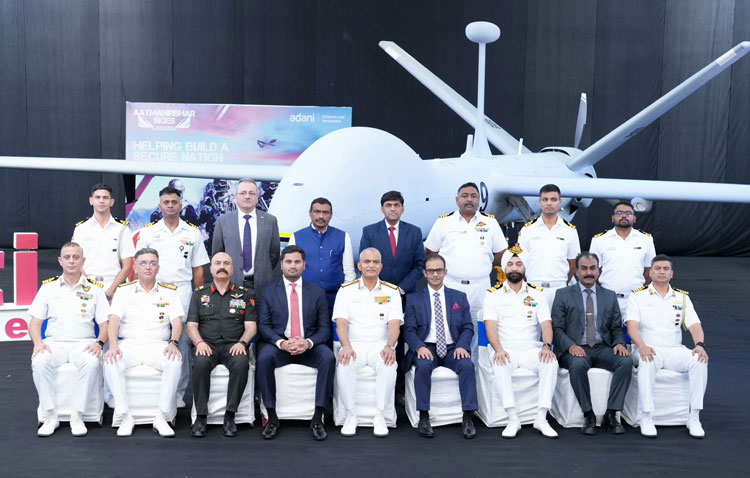INDIAN ARMED FORCES CHIEFS ON OUR RELENTLESS AND FOCUSED PUBLISHING EFFORTS

The insightful articles, inspiring narrations and analytical perspectives presented by the Editorial Team, establish an alluring connect with the reader. My compliments and best wishes to SP Guide Publications.

"Over the past 60 years, the growth of SP Guide Publications has mirrored the rising stature of Indian Navy. Its well-researched and informative magazines on Defence and Aerospace sector have served to shape an educated opinion of our military personnel, policy makers and the public alike. I wish SP's Publication team continued success, fair winds and following seas in all future endeavour!"

Since, its inception in 1964, SP Guide Publications has consistently demonstrated commitment to high-quality journalism in the aerospace and defence sectors, earning a well-deserved reputation as Asia's largest media house in this domain. I wish SP Guide Publications continued success in its pursuit of excellence.
- Operation Sindoor: Resolute yet Restrained
- India’s Operation Sindoor Sends a Clear Message to Terror and the World – ‘ZERO TOLERANCE’
- Japan and India set forth a defence cooperation consultancy framework, talks on tank and jet engines
- Terrorist Attack in Pahalgam in Kashmir: Unfolding a long surgical war against PAK
- Lt General Pratik Sharma takes over Command of Indian Army's Northern Command
TAPAS UAV Project Dropped
The demise of TAPAS BH-201 Drone project raises questions on India's military technological advancements
 |
The Author is Former Director General of Information Systems and A Special Forces Veteran, Indian Army |

Media reports of January 15, 2024 have intimated that the government has shut down the Tactical Airborne Platform for Aerial Surveillance-Beyond Horizon-201 project or TAPAS BH-201 drone project, formerly referred to as Rustom-II until 2016; a medium-altitude long-endurance (MALE) unmanned aerial vehicle (UAV) being developed by the Aeronautical Development Establishment (ADE) under the Defence Research and Development Organisation (DRDO) on lines of the General Atomics MQ-1 Predator.
Despite completing approximately 200 flights, the TAPAS BH-201 drone project faced substantial performance shortfalls
The first flight of the UAV took place in November 2016. The project was sanctioned in February 2011 at the cost of 1,540.74 crores but this was later revised to 1,786 crores in 2022. In May 2022, TAPAS-BH-201 was reported to be handed over to Hindustan Aeronautical Limited (HAL) and Bharat Electronics Limited (BEL) for limited production. The drone was tested at Aero India 2023 during public demonstrations.

The characteristics of Tapas were: capacity - 350 kg (772 lb) payload; length - 9.5m (31 ft 2 in); wingspan - 20.6 m (67 ft 7 in), empty weight - 1,800 kg (3,968 lb); power plant – two NPO-Satum 36T engines wing-mounted turboprop, 74.57 kW (100.00 hp) each (Prototype); power plant – two VRDE indigenous 160 kW (220 hp) each (Production); propellers - 3-blade constant-speed propeller. Performance was to include: maximum speed - 224 km/h (139 mph, 121 kn); ferry range - 1,000 km (620 mi, 540 nmi; endurance - 18 hours; service ceiling 8,500 m (28,000) ft).
The closure of the Tapas project is seen as a major setback to indigenous capabilities in modern-day warfare
Tapas was one of the biggest indigenous project of the DRDO under which 76 such UAVs were to be initially developed – 60 for the Army, 4 for the Navy and 12 for the Indian Air Force (IAF). In July 2022, Armenia had also expressed interest to acquire the TAPAS-BH-201.

According to media reports, the Tapas Project has been shut down despite drone having completed some 200 flights, since it could not meet the preliminary services qualitative requirements (PSQRs) of the military, namely:
- could only attain an altitude of 28,000 feet against the requirement of 30,000 feet;
- has flying endurance of 18 hours against the requirement of 20 hours endurance;
- the airframe configuration chosen for the drone severely limited DRDO's ability to address the performance shortfalls;
- lack of a suitable turboprop power-plant put the DRDO at a dead end.
All this indicates that the performance shortfalls were substantial. The gaps were too wide and beyond redemption.
A significant reason for the project's closure is attributed to the emergence of the 'Make in India' Medium Altitude Long Endurance (MALE) drone, Drishti 10 Starliner
The media says closure of the Tapas project is a major blow to indigenous capabilities in this critical arena of modern-day warfare. There is no mention of how much money is down the drain with closure of the project but certain posts on social media are blaming the military for Tapas being shut down. But the DRDO needs to realise that with opening up of the defence industry to the private sector, the days of extraordinary delays in completing and delivering projects, over expenditure and passing on sub-standard products to the Armed Forces are getting over. This is why the Government-appointed K. Vijay Raghavan Committee has recommended a shake-up in the DRDO and bigger role for private players in defence research.

A major reason for closure of the TAPAS BH-201 drone project apparently is arrival of the 'Make in India' Medium Altitude Long Endurance (MALE) drone, Drishti 10 Starliner on the scene. It has been reported in these columns earlier that on January 10, 2024, Chief of the Naval Staff Admiral Hari Kumar took delivery of the first Drishti 10 Starliner, acquired under the emergency procurement mechanism. Adani Defence and Aerospace has an agreement with Israeli firm Elbit to manufacture the Hermes 900 at Hyderabad with Adani Defence and Aerospace. In March 2023, India had ordered four of these drones, two each for the Army and the Navy, to be co-manufactured by Elbit and Adani Defence & Aerospace.
The K. Vijay Raghavan Committee recommends a shake-up in the DRDO and a bigger role for private players in defence research
The general characteristics of Hermes 900 drone are: crew – two on ground; capacity - 450 kg (990 lb) payload; length - 8.3 m (27 ft 3 in); wingspan - 15 m (49 ft 3 in); gross weight - 1,100 kg (2,425 lb), power plant – one Rotax 916 160 kW (210 hp). Performance parameters of the drone include: maximum speed - 220 km/h (140 mph, 120 kn); cruise speed - 112 km/h (70 mph, 60 kn); endurance – 30 hours; service ceiling - 9,100 m (30,000 ft).
As of now, Adani Aerospace & Defence is only manufacturing the airframe for the Drishti 10 Starliner UAV. However, Elbit of Israel will hopefully undertake transfer of technology of the Hermes 900 in due course to truly make Drishti 10 Starliner an indigenous product – removing the tag of 'assembled in India' or 'manufactured under license'.





